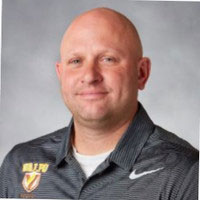NaNoWriMo is a fantastic program that has been around since 1999. In addition, they have made the Nanowrimo YWP (Young Writers Program). This branch of Nanowrimo challenges and encourages young writers specifically.
It gets them on the path of learning how to write a book. They are challenged to write 50,000 words in one month.
It sounds like a crazy venture, but many thousands of people complete the objective each year. What began as a simple concept has grown into a huge, world-renowned event with many extensions and extras.
The Nanowrimo YWP takes place at the same time as the regular Nanowrimo, but it has its own website with some extra features that are designed to help out younger writers.
Nanowrimo itself is aimed at writers who are a minimum of 13 years. The Nanowrimo YWP is for all writers 17 years and under – this includes those younger than 13 as long as they have parental permission.
Why is the NaNoWriMo YWP Important?
The Nanowrimo YWP is important because it places emphasis on the younger generation of writers. The main Nanowrimo program can be a scary undertaking for a younger child. In addition, the website/forum content itself may not be appropriate.
This program for younger writers provides a safe, welcoming, and educational space for kids to write without worrying. It also gives educators a way to facilitate Nanowrimo as a part of their classroom learning in a systematic and professional way.
Nanowrimo YWP is the perfect way for a kid to start learning how to write a novel. Many children want to be creative, but they can be shy.
Rebecca Stead says in one of her Nanowrimo YWP pep talks:
Your weirdness is your strength. Be willing to let some of your truly strange ideas, your nerdiest observations, and your truest emotions into your story. Writing well usually requires that you make yourself vulnerable, which can be hard to do. Most of us have an instinct to protect ourselves. But you probably can’t protect yourself and write a great story at the same time.
The challenge to write so much without thinking about it at length can help kids come out of their shell.
Lastly, it gives parents peace of mind. Nurturing and supporting a child’s gift or desire for creative writing is very important. They may someday want to learn how to write a book.
The program can be exciting and beneficial to a young writer, but the main Nanowrimo may not be as appealing to parents. It would put their child in the same space as thousands of adults writing on all kinds of topics.
How Does NaNoWriMo YWP Work?
The Nanowrimo YWP has three sections:
- Writers
- Educators
- Families
The website and its functions will look a little different depending on which group you are in.
[table id=28 /]
NaNoWriMo YWP for Writers
When signing up to participate, writers will need to make sure they register as a “young writer.”
If they are signing up as part of a classroom initiative, their teacher will have given them a classroom code. This will enable registration without an email address.
If a writer is signing up as an individual and not in connection to a class, they will need to provide their email – if 13 or older. If they are under 13, it needs to be the parent’s email.
Once registered, it’s time to fill out a few profile details and create a novel! If there is an ongoing Nanowrimo event, there will be an active challenge to accept.
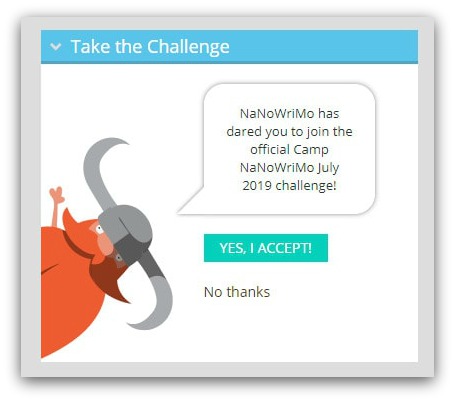
Once accepted, they will be given a chance to create their novel’s profile on the website:
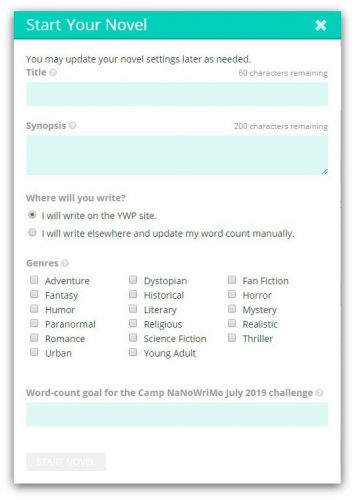
It may be that there is no event coming up or currently running. In this case, they will be able to create their own challenge which will need to include a word count goal.
This goal can be changed at any time throughout the event, so there is no pressure.
The Writing Space
The Nanowrimo YWP provides each writer with an online writing space for them to organize their novel. It includes all their novel’s stats and information.
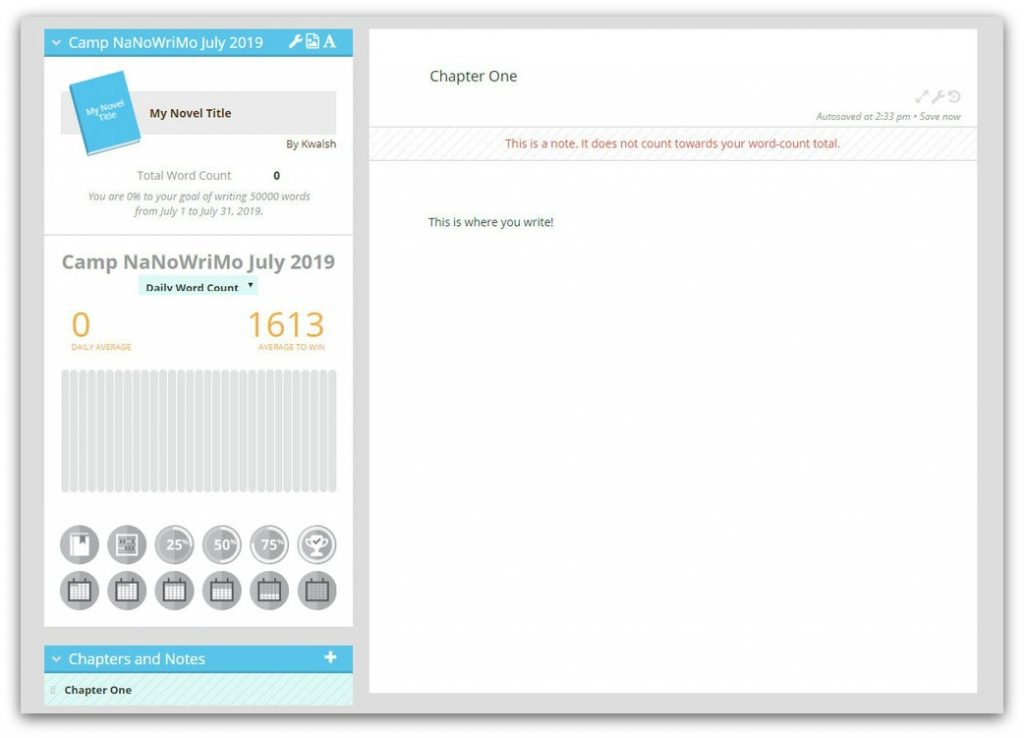
They also have a section with some writing tools:
- Word sprints. These are timed writing sessions. Set the timer and write as much as you can in that amount of time. No stopping.
- The dare machine. This gives a small writing prompt that is meant to spark some movement in your story. If you’re stuck, take the dare it gives you, and go from there.
- Download novel. This lets you download your novel as a PDF or Word doc. This allows for easy printing and sharing.
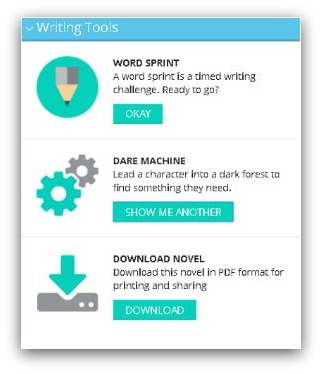
Word sprints are a simple but effective way to get a lot of words written down quickly. The writer can set a timer for whatever time they would like – perhaps 10 or 15 minutes.
The challenge is to write as many words as possible within that time frame. This is when spelling, grammar, and everything they ever learned in English class gets to be thrown out the window!
The idea here is to get words written. Writers can go back to this challenge throughout the month and try to beat their best word count.
The dare machine is essentially a writing prompt generator. It will provide the writer with a short idea or suggestion to include in their story. For example: “lead a character into a dark forest to find something they need.”
It is, of course, up to the writer whether or not they choose to include these prompts in their stories. Even if they don’t use the idea, it can be a quick and effective way to get past a bit of writer’s block. It can also help them add something imaginative to a scene that may be a little boring.
Get Connected
The Nanowrimo YWP has a forum all its own. It is a place for young novelists to interact with each other, brainstorm together, and talk about their writing.
The forums here are a fun and safe place for kids to connect. They are governed by a very strict code of conduct and are monitored by Nanowrimo staff. Writers who are under 13 may look at the forums but will not be allowed to post anything.
The Nanowrimo Template
The Nanowrimo YWP has many tools for young writers, all of which are designed to make the month easier and more fun for them.
In addition to these helpful resources, it might be helpful to also utilize a novel template that is specific to Nanowrimo:
This template will guide them through each day. It reminds them of that day’s word count goal and provides simple story guidelines for that point in their novel.
NaNoWriMo YWP for Educators
There is a fantastic space set up for educators who wish to have their entire class participate in Nanowrimo as a part of school. Educators wishing to sign up will have to register as such and create a password with security questions.
It is important to note that those registering as an educator must be an adult facilitating the Young Writers Program either in school, at a library, or another type of community space. If this is not you, you will not be permitted to make an educators account.
Once you are registered you will have the option to fill out a profile with as much information as you’d like. You will have access to all educator resources.
There are student workbooks, lesson plans, and free classroom kits. These will help inspire your students before, during, and after the event. They are fantastic tools to help your kids learn how to write a novel.
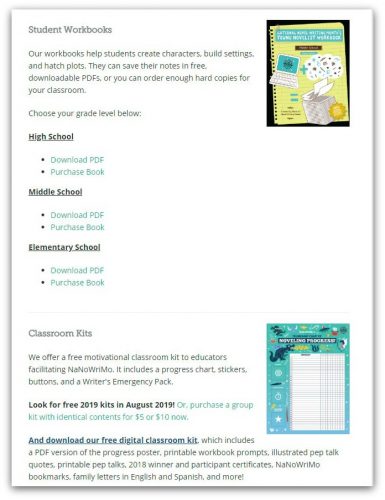
You will also have access to the educator-only forums where you can meet and chat with others like you. This is a great place to exchange tips, advice, and additional resources.
The Virtual Classroom
The next step is to create a virtual classroom. This will be the home-base for you and your students throughout the month. You will able to monitor your student’s novel progress, as well as read and edit them yourself.
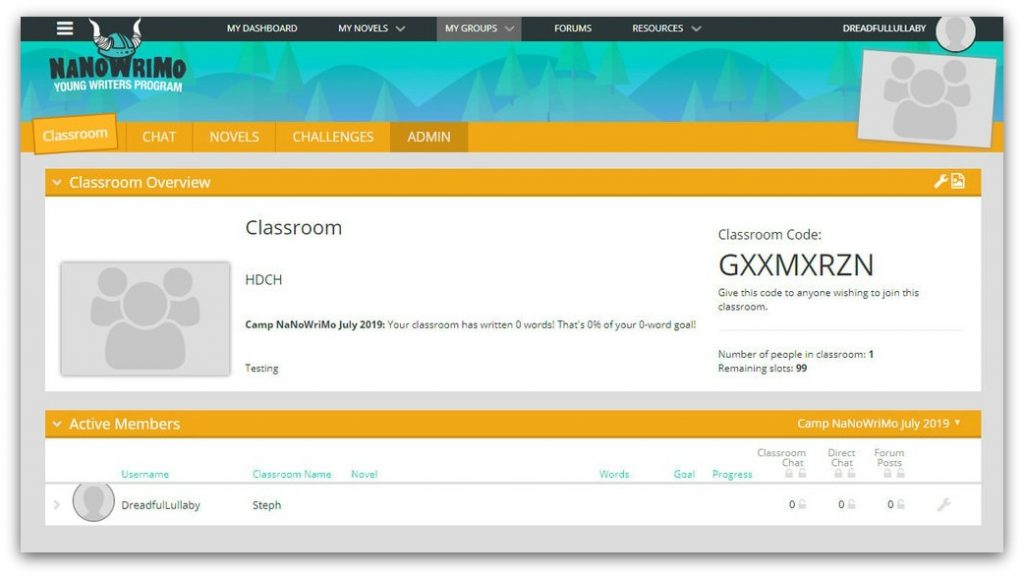
You can also set writing challenges for your class outside of official Nanowrimo events, and you can host class discussions.
If you are hosting Nanowrimo for multiple groups or classes, you can create separate virtual classrooms for each one. Students will need a classroom code in order to join the classroom – this is found in the admin area of your classroom.
Keep Them Motivated
As the educator, you are able to keep track of all your student’s progress. You can keep an eye on their word counts throughout the month. If they are falling behind, there are a few things you can do to keep them motivated.
- Word sprints. If you have them do any writing during class time, try running word sprints as a group. There is a tool for them to do this online by themselves, but a group effort may have them more motivated. They will probably become even more motivated if you offer some incentives! Stickers, candies, fun pens/pencils or small toys all make great prizes for the winner of a word sprint.
- The dare challenge. This is something else you can try using as a group. Give everyone the same prompt and allow them some time to write. After a few minutes, have everyone share how they inserted the prompt into their own unique story. It will be fun and inspirational for the students to see how everyone used the same idea differently.
- Badges are offered at certain milestones throughout the process. They are earned online and displayed on each writer’s profile. Emphasize the badges and their corresponding milestones. Perhaps offer real-life rewards as each student earns a badge.
Prizes especially, are usually enough to get even the non-writers motivated to write a little!
NaNoWriMo YWP for Families
If you are an educator who is hosting a Nanowrimo event for a group of young writers, it may be a good idea to send home a letter for the parents explaining what the project is.
Nanowrimo has a letter drafted up for you that outlines things perfectly. It is available to download and print from their website.
Nanowrimo can be challenging and time-consuming for many kids. It’s important that their parents and families understand what they are doing, and why.
There is also a section on the Nanowrimo YWP website that has some information and resources for the parents of participating children. It begins by giving some helpful links that will describe what Nanowrimo is in detail and how it works for a developing writer.
It also lays out the site’s legal terms and explains how Nanowrimo protects their children. This will be very important to parents, especially those with children under 13 who wish to participate.
The terms and conditions must be reviewed by either a parent or an educator before a child creates an account.
Next, there are some suggested questions and talking points that parents can use to help, support, and encourage their child throughout the month.
Lastly, the website encourages families to write together! Parents can sign up for the Nanowrimo adult program which runs simultaneously to the Nanowrimo YWP in November.
Alternatively, they can sign up as an educator on the Nanowrimo YWP website and write in the same classroom as their child.
After the NaNoWriMo YWP Challenge
November is over, you have 20+ first drafts of varying lengths, and a tired group of kids who just wrote themselves into the ground. What do you do now?
Once the challenge is over, the next steps are probably some of the most exciting for your kids. First comes the editing, and then it’s time to publish those novels!
“Now What?” Months
Students’ novels will be kept on the website for as long as they keep their account. You can go through some editing work with them in January and February before sending them off to be published.
Of course, editing can extend past these two months, but Nanowrimo offers some additional support in January and February. They call these the “now what?” months and there is a forum dedicated to editing help and discussion.
They also run a blog that has some “now what?” resources, including suggestions and steps to take as you begin editing.
Time to Publish!
Nanowrimo has partnered with Blurb, a self-publishing platform for writers. The process can be as simple or as creative as you want. To begin, each novel will need to be downloaded as a PDF. You can do this using Squibler.
The easiest and quickest way to get the books printed is to let Nanowrimo design the book for you. This option only requires you to upload the PDF copy of the novel and select the type of cover and paper you want. Nanowrimo does the rest!
If you and/or your class are feeling adventurous and creative, there is also an option to have the books printed with custom designed covers. This could be a fun activity for your class, and it will make the finished product even more personalized for them.
There are detailed instructions on the Nanowrimo YWP website for both publishing options, and they make the process relatively simple.
Learning about the publishing process is part of learning how to write a novel.
Blurb offers participants of the Young Writers Program 30% off of their order, as well as a free ISBN. They also give 15% of the purchase back to Nanowrimo in support of the Young Writers Program.
Get the Kids Writing
The Nanowrimo YWP is beneficial in so many ways. For young writers, it offers a safe and productive environment to stretch, grow, and develop their writing skills. It’s a step in the process of teaching the kids how to write a book.
If an entire class is participating, it’s a learning experience even for students who are not naturally “writers.” It teaches discipline, encourages goal-setting, and utilizes their imagination.
For educators, it is a fantastic program that is ready to go. It offers a done-for-you structure, excellent support, and plenty of resources. It’s a fun challenge that will have students excited to write. Overall, it’s an excellent addition to any curriculum.
Nanowrimo is successful because of their long-standing passion for both writing and the writer. They value creativity and work hard to make success attainable for everyone.
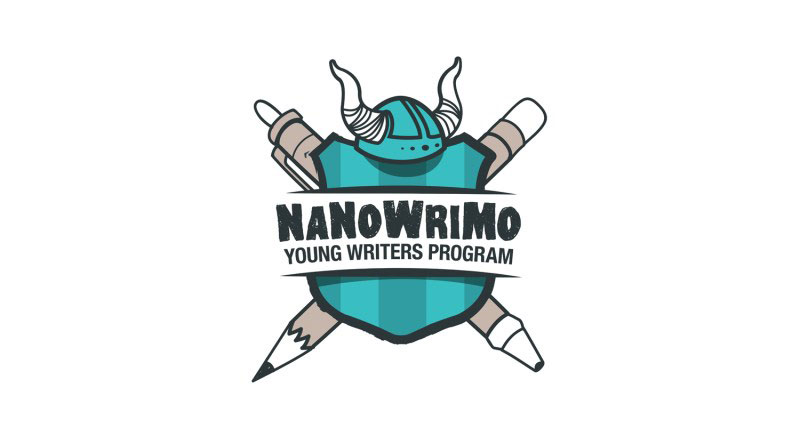
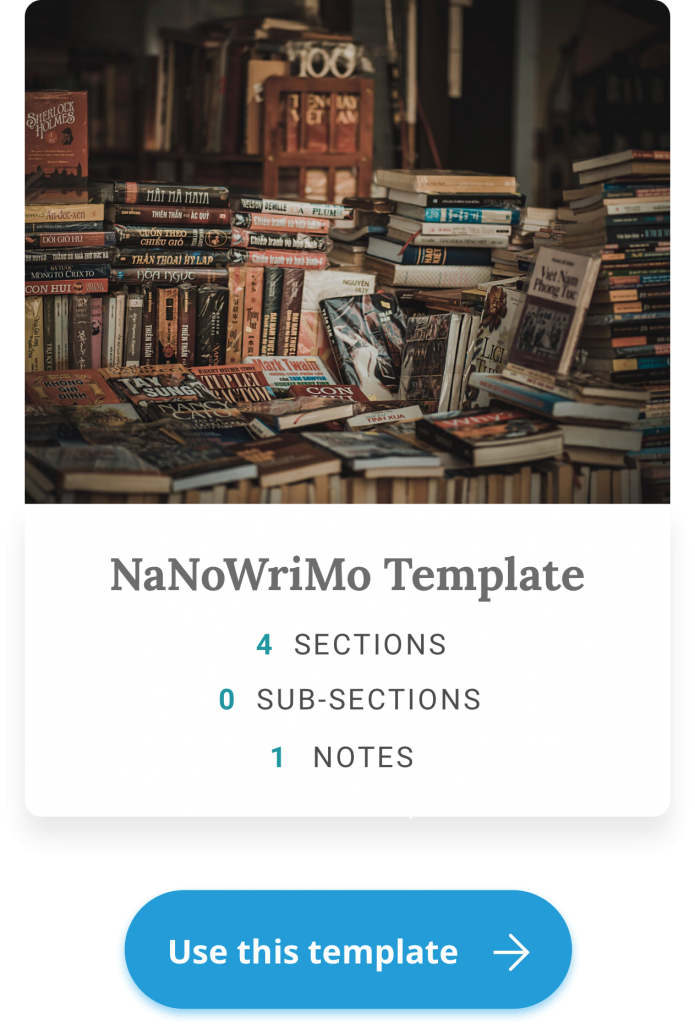
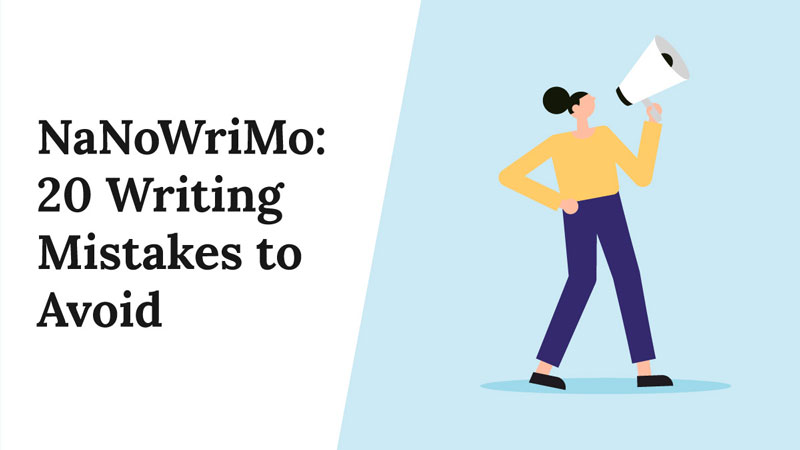
![What is Camp NaNoWriMo? [An Insider’s Review]](/learn/wp-content/uploads/2021/12/camp-nanowrimo1.jpg)
![NaNoWriMo: How to FINISH Your 50,000-Word Novel [Step by Step]](/learn/wp-content/uploads/2021/12/nanowrimo-review1.jpg)




